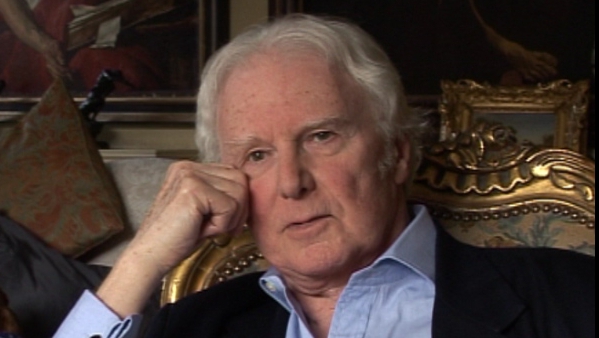NEXT STORY

Knowing how to spot a forgery
RELATED STORIES

NEXT STORY

Knowing how to spot a forgery
RELATED STORIES


|
Views | Duration | |
|---|---|---|---|
| 61. What it means to be an Old Masters drawing expert | 238 | 05:04 | |
| 62. Knowing how to spot a forgery | 258 | 04:06 | |
| 63. Copies, imitations and attribution | 200 | 02:14 | |
| 64. Exposing forgery in art | 284 | 03:05 | |
| 65. Difficult days at Christie's | 251 | 04:45 | |
| 66. A faked van Dyck causes confusion | 254 | 03:29 | |
| 67. Being ill-used by Christie's | 260 | 05:10 | |
| 68. Why I left Christie's | 288 | 05:36 | |
| 69. Moving from the art market to art criticism | 235 | 02:02 | |
| 70. Speaking out in defense of the truth | 274 | 04:10 |


[Q] So what is it to be an old master drawing expert at Christie’s? That job you had?
Well, old master drawing master expert sounds rather highfalutin. You can’t be a drawings expert if you’re not also a paintings expert, because the drawing very often leads to a painting. Very few drawings stand in their own right. They are for something. So if you look at a painting… and this is why it’s so important to have this huge visual memory, because you’ll see a drawing and you need to be able to say, oh, that looks like the left-hand figure in the Adoration of the Magi by Guatieri [sic] or somebody. And then you need to go and look it up. And sometimes you know that a picture must exist somewhere because of the nature of the drawing or drawings, and you’re standing in the vaults below Christie’s, and you’re going through picture after picture after picture, and suddenly something comes out of the stack, and ah! You know. You’ve recognised it, because you already knew the drawing. Because the drawing… the drawing is of a quality that tells you that this must be for a work of art that you do not yet know.
And in my day, more than half a century ago, Christie’s and Sotheby’s were treasure troves of discovery. All sorts of things passing were through their hands. And so you needed somebody like me, who had the visual memory that was really enormous, over a very wide range... deep as well as ranging, who could just relate things to each other.
And that was the great joy of being there. You were, in fact, identifying things all the time. And sometimes you didn’t know, but you had an idea that this might be the case, in which case, off you go to The Courtauld and you use the photograph library there, to either confirm or deny what your connoisseurship is telling you.
That’s… it’s a very practical kind of art history. It’s an essential part. It isn’t the detail of art history… well, it is the detail, in fact, because what you’re doing is filling gaps. You find something which is… which fits perfectly between this picture of 1550 and this picture of 1554. So you can slot it in. So you are actually contributing to the fine detail of the history of art when you do this kind of identification. And sometimes what you do is you have the drawing and the picture is in Brunswick and so you then write to Brunswick and say, here is the drawing, so that their archives are kept up to date with… they may not be able to afford the drawing, they may not want to buy it, anyway, but at least they know they have a photograph of it and they know what it is and where it is. That kind of thing. So you’re drawing things together all the time, and that I… that was really rewarding, because although the business of the auction house was essentially to sell things and make money, you know, you made money for the owners and took 10%, that’s how it ran, the real business for me was doing this kind of drawing together and filling in the jigsaw, and that’s a huge intellectual… it’s also an emotional reward, a real sense of having done something worth doing, when you put things together like that, and everybody’s knowledge is that much more precise and complete.
Born in England, Brian Sewell (1931-2015) was considered to be one of Britain’s most prominent and outspoken art critics. He was educated at the Courtauld Institute of Art and subsequently became an art critic for the London Evening Standard; he received numerous awards for his work in journalism. Sewell also presented several television documentaries, including an arts travelogue called The Naked Pilgrim in 2003. He talked candidly about the prejudice he endured because of his sexuality.
Title: What it means to be an Old Masters drawing expert
Listeners: Christopher Sykes
Christopher Sykes is an independent documentary producer who has made a number of films about science and scientists for BBC TV, Channel Four, and PBS.
Tags: Christie's, Adoration of the Magi, The Courtauld Institute of Art, Brunswick, Braunschweig, Sotheby's
Duration: 5 minutes, 4 seconds
Date story recorded: April 2013
Date story went live: 04 July 2013